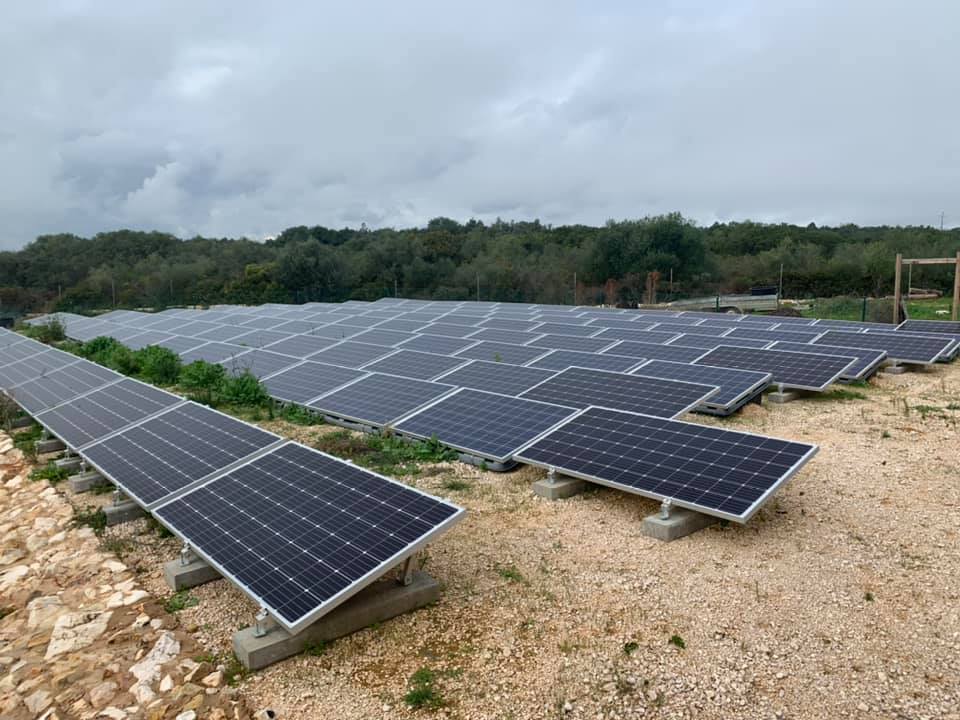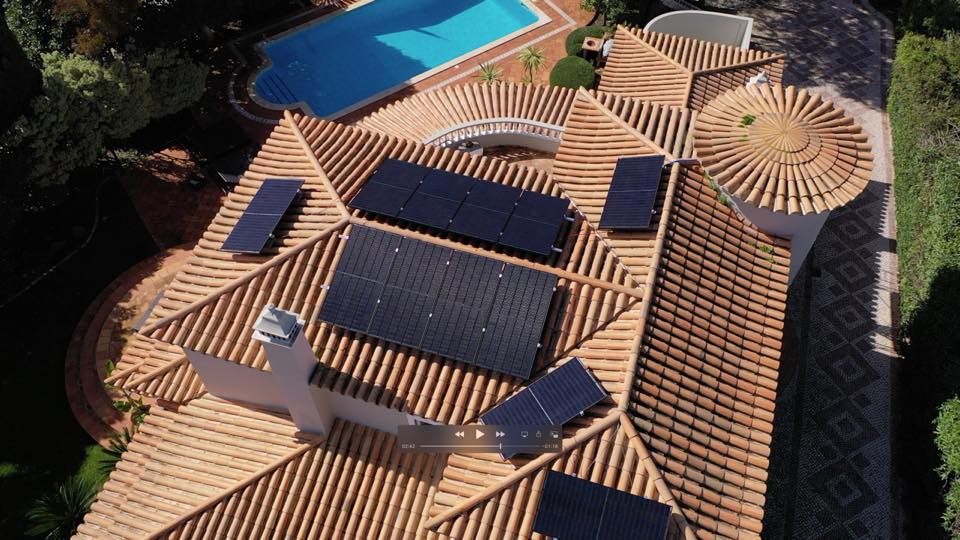Aproveitando o poder do sol
What is Solar2Power?
Solar2Power is a technology that converts sunlight into electrical power through the use of solar panels. It is an innovative way to generate electricity without relying on non-renewable resources, making it a sustainable and eco-friendly solution.
At the core of Solar2Power technology are solar panels, which are made up of photovoltaic (PV) cells that convert sunlight into direct current (DC) electricity. The PV cells consist of layers of silicon, which when exposed to sunlight, generate an electrical current. This electrical current is then collected and converted into alternating current (AC) electricity that can be used to power homes, businesses, and other applications.
There are different types of solar panels available, including monocrystalline, polycrystalline, and thin-film solar panels. Monocrystalline solar panels are made from single silicon crystals and are known for their high efficiency. Polycrystalline solar panels are made from multiple silicon crystals and are slightly less efficient than monocrystalline panels but are more cost-effective. Thin-film solar panels are made from a thin layer of photovoltaic material and are the most affordable but least efficient of the three types.
Solar2Power technology has numerous real-world applications. For example, solar panels can be installed on rooftops of homes, buildings, and carports, providing electricity to power appliances and lights. Solar farms are also being built, where vast arrays of solar panels generate electricity for entire communities or regions.

One of the most significant benefits of Solar2Power technology is its ability to provide electricity to remote or off-grid locations. In these situations, solar panels can be paired with batteries to store excess electricity for use when the sun isn’t shining.
There are numerous case studies that showcase the power of Solar2Power technology. For example, in India, the state of Gujarat built the world’s largest solar power plant, covering an area of 19 square kilometers and providing electricity to over 200,000 homes. In the United States, the city of Las Vegas installed solar panels on over 100 government buildings, reducing the city’s electricity bill by millions of dollars.
Overall, Solar2Power technology is a promising solution for generating electricity in a sustainable and cost-effective way. With advancements in technology and increased investment, the use of Solar2Power is expected to continue to grow in the coming years.
Advantages of Using Solar2Power
Using Solar2Power has numerous advantages, ranging from environmental benefits to long-term cost savings. In this section, we will delve into the advantages of using Solar2Power and explore why it has become a popular choice for individuals, businesses, and governments worldwide.
Environmental Benefits
One of the most significant advantages of Solar2Power is its positive impact on the environment. By using solar energy, we can reduce our reliance on non-renewable resources such as coal, oil, and gas, which are major contributors to greenhouse gas emissions and climate change.
Solar2Power technology produces electricity without emitting any pollutants or greenhouse gases, making it a clean and sustainable solution. By using Solar2Power, we can significantly reduce our carbon footprint and contribute to a more sustainable future.
Cost Savings
Another advantage of Solar2Power is its potential to save money in the long run. While the initial cost of installation can be higher than traditional energy sources, such as fossil fuels, the long-term savings can be significant.
Solar2Power systems require little to no maintenance, and the cost of operating them is relatively low. Once installed, solar panels can produce electricity for 25 to 30 years, making them a long-term investment that can save individuals and businesses money on electricity bills.
Cost Comparison
To illustrate the potential cost savings of Solar2Power, let’s compare it to traditional energy sources. According to the National Renewable Energy Laboratory, the average cost of residential solar systems in the United States has decreased by 70% since 2010. In 2020, the average cost was around $2.81 per watt.
Comparatively, the cost of electricity from fossil fuels varies depending on location and type. However, the average cost of electricity in the United States was around $0.13 per kilowatt-hour in 2020.
Assuming an average household uses around 10,000 kilowatt-hours of electricity per year, the cost of electricity from fossil fuels would be around euro1,300 per year. On the other hand, if the household had a 5-kilowatt solar system installed, it would cost around euro 14,050. However, the system would generate free electricity for the next 25 to 30 years, saving the household around euro 32,500 over that period.
Other advantages of using Solar2Power include:
- Energy independence – Solar2Power provides individuals and businesses with a degree of energy independence, allowing them to generate their electricity instead of relying on the grid.
- Improved grid reliability – By using Solar2Power, we can reduce the strain on the electrical grid, leading to fewer power outages and more reliable electricity supply.
- Government incentives – Many governments offer incentives for using Solar2Power, such as tax credits, rebates, and grants, making it more accessible and affordable for individuals and businesses.
Overall, the advantages of using Solar2Power are clear. By reducing our reliance on non-renewable resources, we can mitigate climate change, save money on electricity bills, and improve our energy independence.
How to Get Started with Solar2Power
Getting started with Solar2Power is relatively straightforward, but there are a few key considerations to keep in mind. In this section, we will discuss the installation process, the key factors to consider, and the maintenance required to keep your Solar2Power system running smoothly.
Installation Process
The installation process for Solar2Power typically involves the following steps:
- Site survey – A solar installer will visit your property to assess the site’s suitability for solar installation. They will evaluate factors such as the amount of sunlight the site receives, shading, and the orientation of the roof.
- Design – The installer will design a solar panel system tailored to your specific needs, taking into account factors such as your electricity consumption and budget.
- Installation – The solar panels will be installed on your property, usually on the roof. The installation process typically takes 1-3 days, depending on the size of the system.
- Inspection – Once the installation is complete, the solar installer will conduct an inspection to ensure the system is working correctly.
Key Considerations
When installing Solar2Power, several key factors must be considered to ensure optimal performance and longevity of the system. These include:
- Location – The location of your property will determine how much sunlight your solar panels receive. Ideally, your solar panels should be installed in an area that receives maximum sunlight throughout the day.
- Orientation – The orientation of your solar panels is also essential for optimal performance. In the northern hemisphere, solar panels should face south, while in the southern hemisphere, they should face north.
- Shading – Shading can significantly impact the performance of your Solar2Power system. Avoid installing solar panels in areas that are shaded for extended periods, such as under trees or near tall buildings.
Maintenance
Solar2Power systems require minimal maintenance, but there are a few tasks that should be performed regularly to ensure optimal performance. These include:
- Cleaning – Solar panels should be cleaned periodically to remove dirt, dust, and debris that can impact performance. Use a soft-bristled brush or a hose to gently clean the panels.
- Inspection – Regular inspections of your Solar2Power system can help identify any issues early on. Check for signs of damage or wear and tear, such as cracked panels or loose connections.
Optimizing Performance
To optimize the performance of your Solar2Power system and extend the lifespan of the panels, consider the following tips:
- Monitor performance – Keep track of how much electricity your Solar2Power system is producing to identify any issues early on.
- Invest in energy-efficient appliances – By using energy-efficient appliances, you can reduce your electricity consumption and maximize the benefits of your Solar2Power system.
- Upgrade your system – As technology advances, newer solar panels can be more efficient and cost-effective. Consider upgrading your system every 10-15 years to take advantage of these advancements.
FAQs
Here are answers to some of the most commonly asked questions about Solar2Power:
- How much does it cost to install Solar2Power?
The cost of installing Solar2Power varies depending on several factors, such as the size of the system, the type of solar panels used, and the installation company’s labor costs. On average, the cost of a 6-kilowatt solar panel system ranges from euro12,000 to euro 20,000. However, incentives and rebates from federal and state governments can significantly reduce the upfront costs.

- How long do solar panels last?
Solar panels have an expected lifespan of 25-30 years, but many panels can last much longer with proper maintenance. The panels’ warranties typically last 25 years, ensuring that they will continue to produce a certain amount of electricity during that period.
- How much electricity can Solar2Power generate?
The amount of electricity a Solar2Power system can generate depends on several factors, such as the size of the system, the amount of sunlight the site receives, and the efficiency of the solar panels. On average, a 6-kilowatt solar panel system can generate between 8,000-12,000 kilowatt-hours of electricity per year, depending on the location.
- Can Solar2Power work in cold or cloudy climates?
Solar2Power can still work in cold or cloudy climates, but the efficiency of the system may be lower. Solar panels require sunlight to generate electricity, so cloudy or overcast weather can reduce the amount of electricity produced. However, solar panels can still generate some electricity in these conditions.
- How does Solar2Power affect the value of a home?
Installing Solar2Power can increase the value of your home. Several studies have shown that homes with solar panels installed have a higher resale value than those without. The exact increase in value depends on several factors, such as the size of the system, the location, and the real estate market.
- What incentives are available for using Solar2Power?
There are several incentives and rebates available for using Solar2Power. The federal government offers a 26% tax credit for the cost of solar panel installation, which can significantly reduce the upfront costs. Many states and local governments also offer additional incentives, such as property tax exemptions and rebates.
In conclusion, Solar2Power is an excellent renewable energy source that can significantly reduce carbon emissions, save money in the long run, and increase the value of your home. While the upfront costs may seem daunting, incentives and rebates from the government can significantly reduce the costs. With proper installation, maintenance, and optimization, Solar2Power can provide clean, sustainable energy for decades to come.


